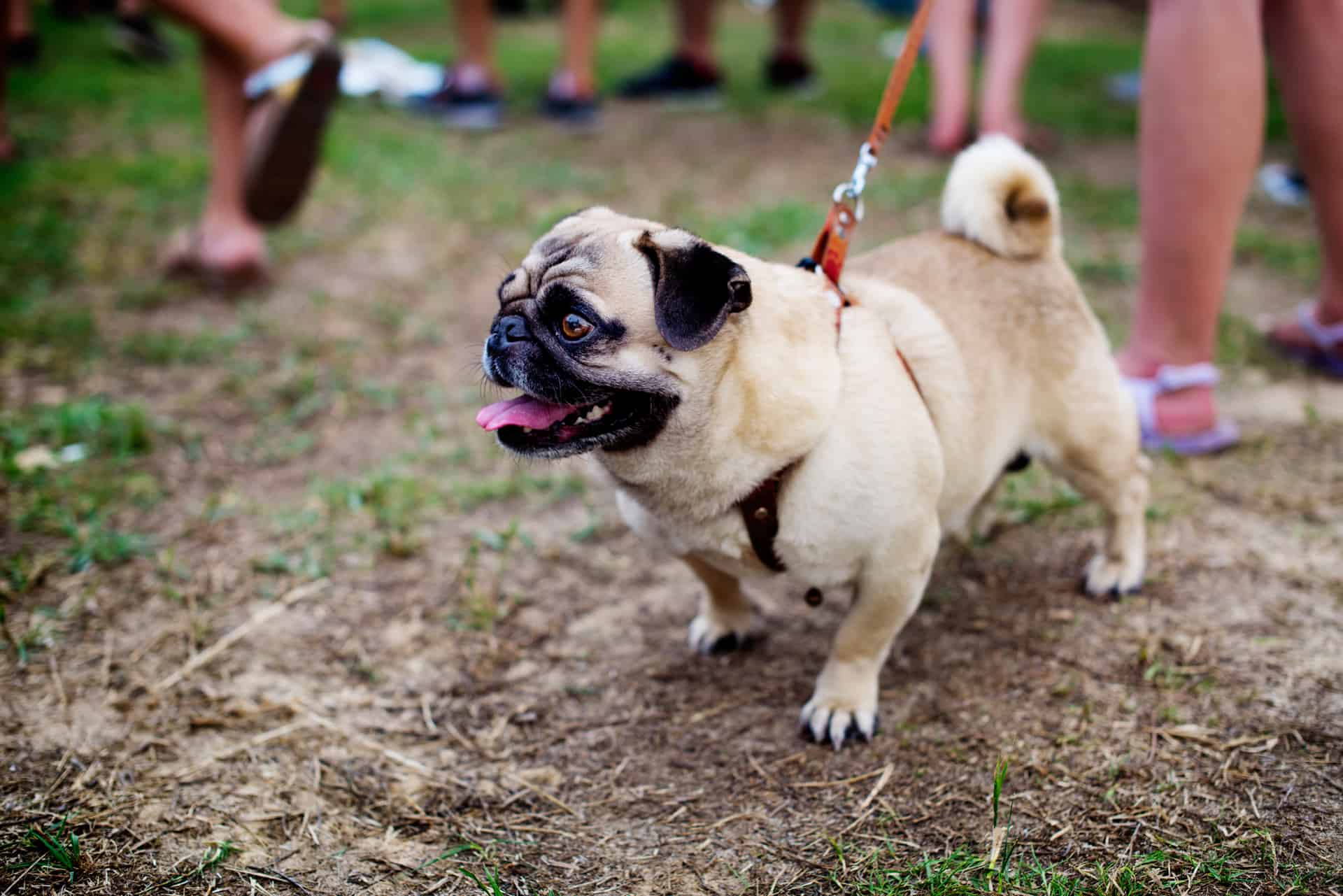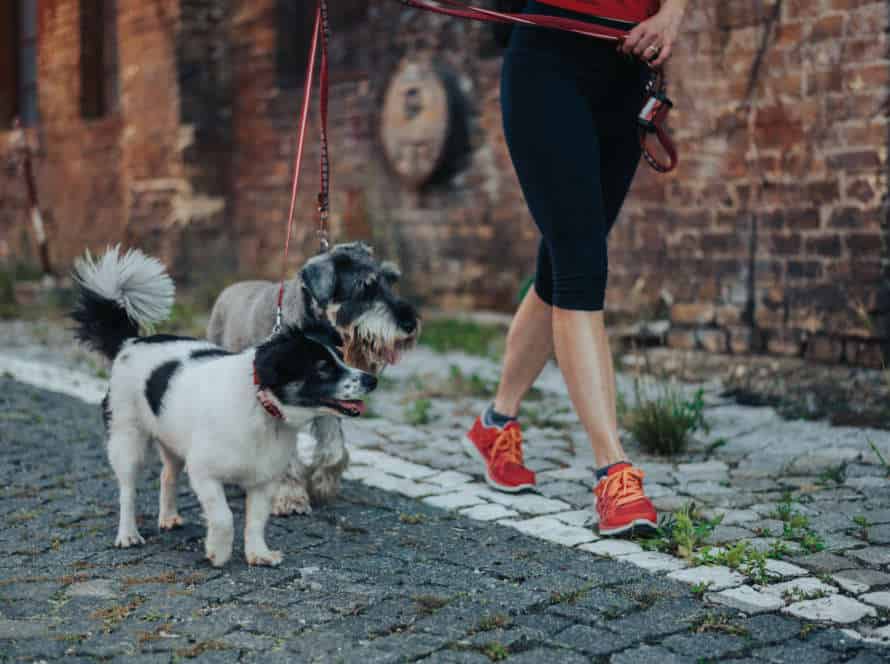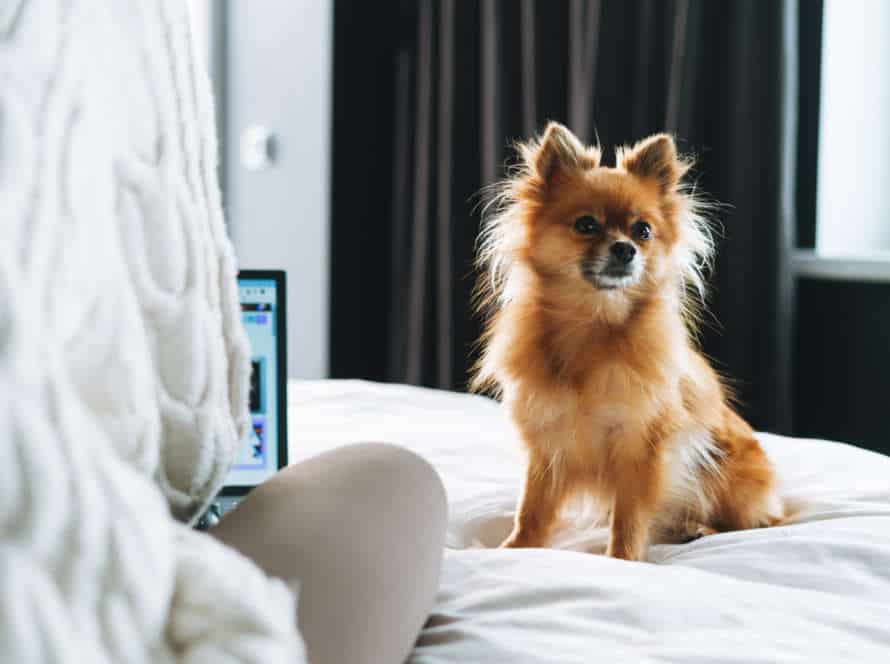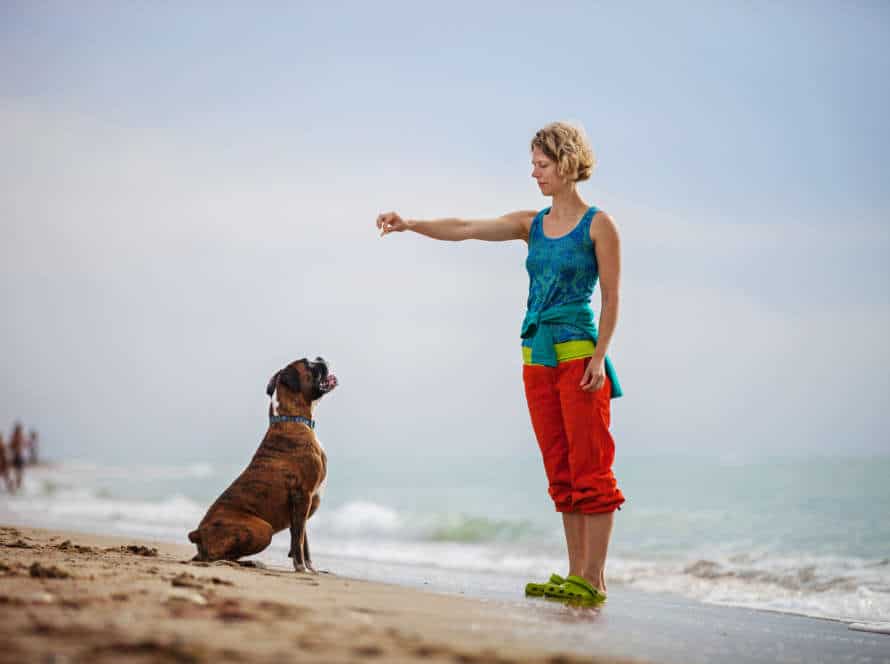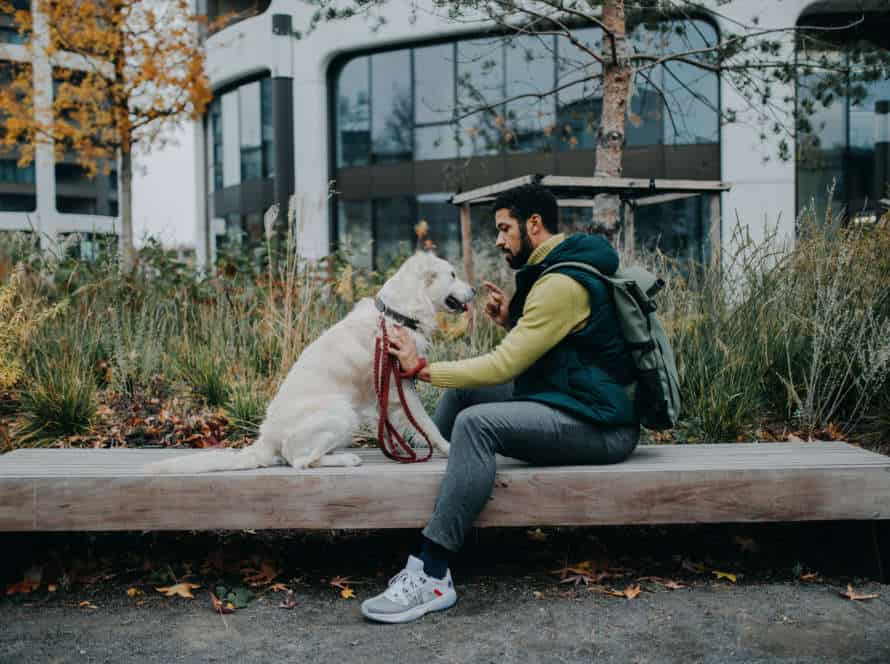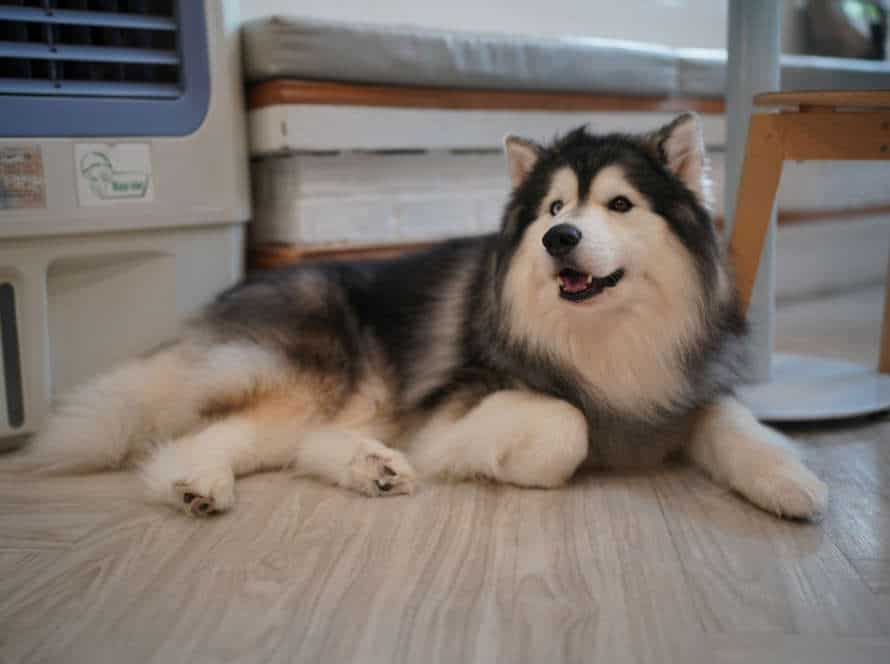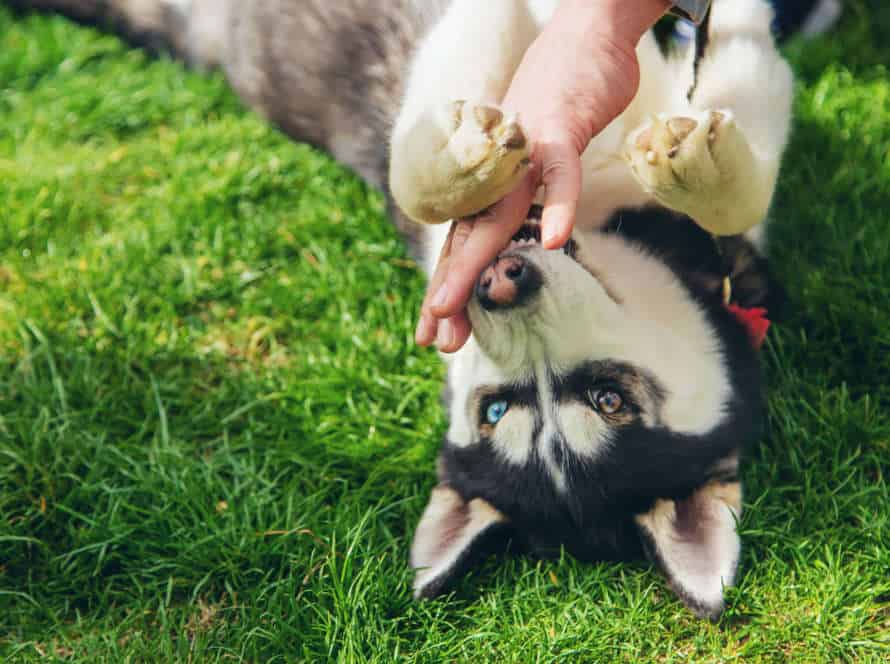How to Keep Leash Training Fun and Engaging for Your Dog
Leash training is a great way to bond with your pup and show them good behavior. Make it enjoyable for both of you with fun activities! Here are some tips:
- Take your dog to new places, like parks and beaches.
- Reward them with treats and toys when they do well on the leash.
- Change up the routine to keep them interested.
- Include playtime during walks.
Leash training is a process, not a one-time thing. Be patient and reward your pup when they do well. With consistency and positive reinforcement, your pup will soon be a pro on the leash.
Making the Leash a Positive Association
For successful leash training, it is essential that your pup only ever has positive associations with it. Keep sessions short and upbeat! Make sure the pup feels secure and safe with the leash. Here are some tips to make leash training fun and engaging:
Using Treats to Build a Positive Association
Treats are great for leash training. They help your pooch form a positive connection with the leash. Here’s how to use them:
- Offer yummy, high-value treats when your dog behaves well. Like walking calmly or staying by your side.
- In the beginning, use treats often.
- As your pup gets used to the leash, reduce the treats. But still reward them for good behavior.
With patience and the right treats, you can make leash training fun for both of you!
Using Verbal Praise to Reinforce Good Behavior
Verbal praise is a great way to reward good behavior during leash training, making it fun for your pup!
Whenever your dog does something good, give them a happy, cheerful reaction.
Say phrases like “Good boy/girl!“, “Well done!” or “Great job!“
You can give treats if you want, but don’t rely only on treats – too much can make your pup dependent.
When they make a mistake, don’t scold or punish. Just redirect, and then praise them when they do it right.
This way, they’ll have a positive association with the leash and have fun while training!
Using Playtime as a Reward
Dogs are playful creatures and it’s great to reward them with playtime when leash training. Here’s how to make the leash a positive experience for your pup:
- Introduce the leash as a toy and let your furry friend play with it for a few minutes. That way, they’ll connect it with fun.
- Take short walks around the house with the leash. Use encouraging words and offer treats for good behavior.
- Gradually increase the walk length and duration as your pup gets more comfortable.
- If your pup tries to pull, stop walking and wait for them to stop before going again. This teaches them pulling slows down the walk.
- Keep using treats, praise and positive reinforcement.
Pro tip: Training your pup requires patience and consistent effort. Eventually your pup will link the leash to happy experiences and it’ll be easier to take them on walks.
Incorporating Games into Your Leash Training
Leash training your pup can be tricky! To make it more fun, use games! Games like fetch and hide-and-seek will keep your pup engaged. Plus, they’ll help your pup learn the right leash walking behavior. Here are some tips to make leash training fun and successful:
Using Fetch to Reinforce Good Behavior on-Leash
Fetch is a great way to make leash training fun and efficient. Start by teaching your pup basic commands like ‘sit‘ and ‘stay‘. Secure the leash and harness so they don’t run away with the toy.
Throw it a short distance and command them to fetch. Reward and praise when they return. Gradually increase the difficulty, while ensuring they obey and are safe. Keep sessions short and enjoyable. Fetching will make leash training quick and enjoyable.
Using Hide-and-Seek to Improve Recall on-Leash
Hide-and-seek is a great way to improve recall on-leash.
It makes leash training more fun and engaging for your pup. To play it:
- Hold the leash firmly and say “stay.”
- Hide behind a tree or bush, where your pup can still partially see or hear you.
- Call out your pup’s name or a consistent recall phrase.
- When pup reaches you, reward with a treat and praise.
- Increase difficulty with more challenging hiding spots or multiple people calling from different locations.
This game adds a playful approach to training. It teaches your pup to come back on leash, which increases safety and prevents issues like running away or getting lost.
Playing Tug-of-War to Improve Leash Manners
Tug-of-War is great for leash training! Teach your dog impulse control and respect for boundaries. Here’s how to play:
- Grab an appropriate tug toy for your pup’s size and strength.
- Start by saying “take it” and gently tugging on the toy.
- Reward them for respecting the boundaries.
- Practice stopping the game occasionally.
- Use the “drop it” command to end and reward your dog when they release the toy.
Remember: Supervise your pup while playing Tug-of-War and never let them play with inappropriate toys or be too aggressive as this can lead to bad behavior.
Changing up the Walking Route
Leash training can be tricky to keep fun for your pup. An easy way? Change the route of your walks! Different smells, sights, and sounds can keep your pup stimulated and engaged. Plus, they get to sharpen their leash manners and recall skills in new areas.
How can you change up the walking route and make it more enjoyable? Let’s find out!
Exploring New Areas to Keep Walks Interesting
Take your pup on a new adventure! It’ll keep walks fun, healthy and enjoyable. Here’s how:
- Discover different routes in your neighbourhood and go on mini-road trips to nearby parks and trails.
- Find dog-friendly spots like beaches, forests and urban areas.
- Mix up the timing of walks to explore the changes in weather, lighting and activity. Making changes can also help with leash training. Exploring new places and meeting new people and dogs will give your pup the chance to socialize and build better walking skills.
Pro Tip: Always keep your pup on a leash and be aware of your surroundings for a safe and enjoyable experience.
Exposing Your Dog to Different Types of Terrain
Strolling your pup on varied terrains can be great for their physical and mental health. Here are some tricks to make leash training fun and stimulating:
- Discover terrain in your area such as woody tracks, rocky paths and sandy beaches.
- Start with short walks on different terrains and step by step increase the duration and difficulty.
- Reward your pup with treats and compliments to motivate them to explore and walk on new terrain.
- Include activities like fetch or hide-and-seek to engage their mind and body during the walk.
- Always prioritize their safety by using a trustworthy leash and monitoring their behavior.
Bonus Tip: Dogs love discovering new sights and sounds, try taking them on different terrain. Additionally, keep in mind that different dogs may have different preferences when it comes to terrain, so experiment to find their faves.
Encountering New Stimuli to Keep Your Dog Mentally Engaged
Mix up your pup’s walking route for mental stimulation and a fun leash-training experience! Here are some tips for you:
- Plan ahead and scope out new routes. Check out parks, forests and city areas.
- Bring treats and toys to keep your pup focused and motivated.
- Let them sniff and explore, but watch out for things that could be hazardous.
- Keep your pace and direction changing to avoid boredom or distraction.
- Keep an eye on their body language and energy levels to make sure they’re happy. Pro Tip: Train them to walk off-leash for more freedom and mental stimulation.
Keeping your Dog Physically and Mentally Stimulated
Leash training your pet is a great way to help them become obedient. Don’t make it dull though! Make it fun for you and your pup. Stimulate them both physically and mentally for the best results. This will give you both a positive and rewarding experience.
Making Sure Your Dog is Getting Enough Exercise
Exercise is vital for your pup’s health and mental stimulation. Here are some tips to keep them active:
- Walking/Running: Take your pup for a daily walk or run. It helps them release energy, build muscles, and explore new places. Make sure your spot allows dogs, and is suitable for your pup’s breed and age.
- Playtime: Have fun with your pup – play fetch, tug of war, or hide and seek. It’s a great way to bond, plus develops motor skills and mental acuity. Take the fun outside by playing frisbee, obstacle courses, or other games that involve running and jumping.
- Leash Training: Make leash training enjoyable for you and your pup. It can be challenging, but use treats, toys, and affirmation to keep them engaged. This makes the experience productive and fun for all!
Providing Mental Stimulation at Home During Off-Leash Time
Adding mental stimulation to your pup during off-leash time is great for maintaining physical and mental health. Here are some ideas to make leash training fun:
- Use interactive toys like puzzles, treat dispensers, or noise-making toys.
- Set up an agility course or practice basic obedience commands in the yard.
- Hide treats and toys for your dog to find in a scavenger hunt.
- Take a different route each day and let your pup sniff and explore.
Including mental activities in your pup’s routine will help avoid boredom, bad behavior, and improve their overall wellness.
Offer Engaging Toys or Puzzle Feeders as a Reward
Keep your pup active and mentally stimulated when leash training. Give them engaging toys or puzzle feeders as a reward! Here are some tips:
- Pick a toy or feeder that fits your pup’s size and personality.
- Show the toy or feeder to your pup before you start.
- Reward them with it when they do something right or complete a task.
- Switch up the toy or feeder to keep your pup interested.
- Pro tip: Focus on creating good habits and building a connection with your pup. Toys or feeders should be fun, extra activity for the training.
Addressing Common Leash Training Issues
Leash-training can be tricky! Be patient and consistent. Make sure the process is fun and engaging for your pup. Here are some tips to keep it enjoyable:
- Be patient while training.
- Stay consistent with commands.
- Make sure your pup is having fun.
Handling Leash Reactivity
Leash reactivity can be a challenge for dog owners during training. But, some strategies can help! Here are some tips:
- Stay Calm. Dogs sense emotions. So stay outwardly calm to stop the reactivity.
- Positive Reinforcement. Give treats, praise or toys when your dog does good during training.
- Sit and Stay. Teach your pup “sit” and “stay” to help them stay calm on walks and in triggers.
- Keep Distance. Stay away from triggers like other dogs or people. Decrease distance over time.
- Be Consistent. Consistent training and positive reinforcement can help reduce leash reactivity. Pro Tip: Keep sessions short and fun. Focus on making them engaging and enjoyable for your pup!
Correcting Pulling on the Leash
If your pup is pulling on the leash when out for walks, try these techniques to stop the behaviour.
- Stop and start: Stop walking when your dog begins to pull. Wait for them to return to your side. Give a treat and start walking again. Repeat till your dog understands.
- Change Directions: If your dog is after something, like a squirrel or another pooch, switch direction. This will show them that pulling won’t get them what they want and to listen to your commands.
- Positive Reinforcement: Reward your dog with treats and praise when they stay by your side without pulling. Over time, they will learn this behaviour earns rewards.
To keep leash training enjoyable, use toys and treats to keep them engaged and excited about walks.
Teaching Your Dog to Walk Alongside You Comfortably
Leash training your pup is important. To make it fun, address common issues. Here are some tips to help:
- Start small- walks that gradually become longer.
- Use positive reinforcement- treats, praise, and love.
- Teach commands- like “heel” or “stay.”
- Make it a game- fetch or hide-and-seek.
And above all, be patient. Have fun!
Frequently Asked Questions
1. Why is it important to keep leash training fun and engaging for my dog?
It’s important to keep leash training fun and engaging for your dog because they are more likely to want to participate and learn. If they find the training boring or unpleasant, they may resist or become uninterested in learning.
2. What are some fun ways to incorporate training into our walks?
You can incorporate training into your walks by playing games, such as “follow the leader” or “red light, green light.” You can also teach your dog tricks such as “spin” or “high five” during your walks.
3. How can I keep my dog from getting distracted during our walks?
You can keep your dog from getting distracted during your walks by using high-value treats, such as cheese or meat, to keep their attention focused on you. You can also vary your walking route or play “find it” games to keep them engaged.
4. How often should I train my dog on the leash?
You should train your dog on the leash a few times a week, for short sessions. It’s important not to overdo it and to make sure that your dog is enjoying the training.
5. What should I do if my dog pulls on the leash during our walks?
If your dog pulls on the leash during your walks, you can stop walking and wait for them to come back to your side before continuing. You can also teach them the “heel” command and reward them for walking calmly beside you.
6. How can I make sure that my dog is enjoying the leash training?
You can make sure that your dog is enjoying the leash training by paying attention to their body language and behavior. If they are wagging their tail, focused on you, and excited to learn, it’s a good sign that they are enjoying the training.

